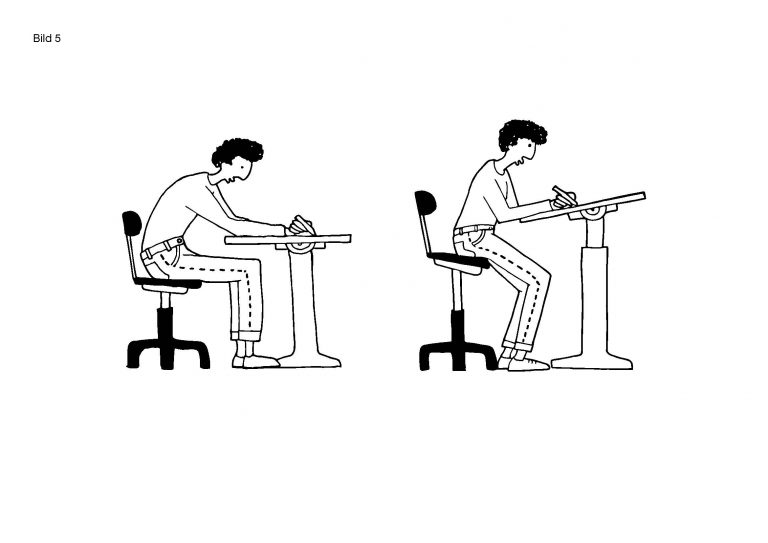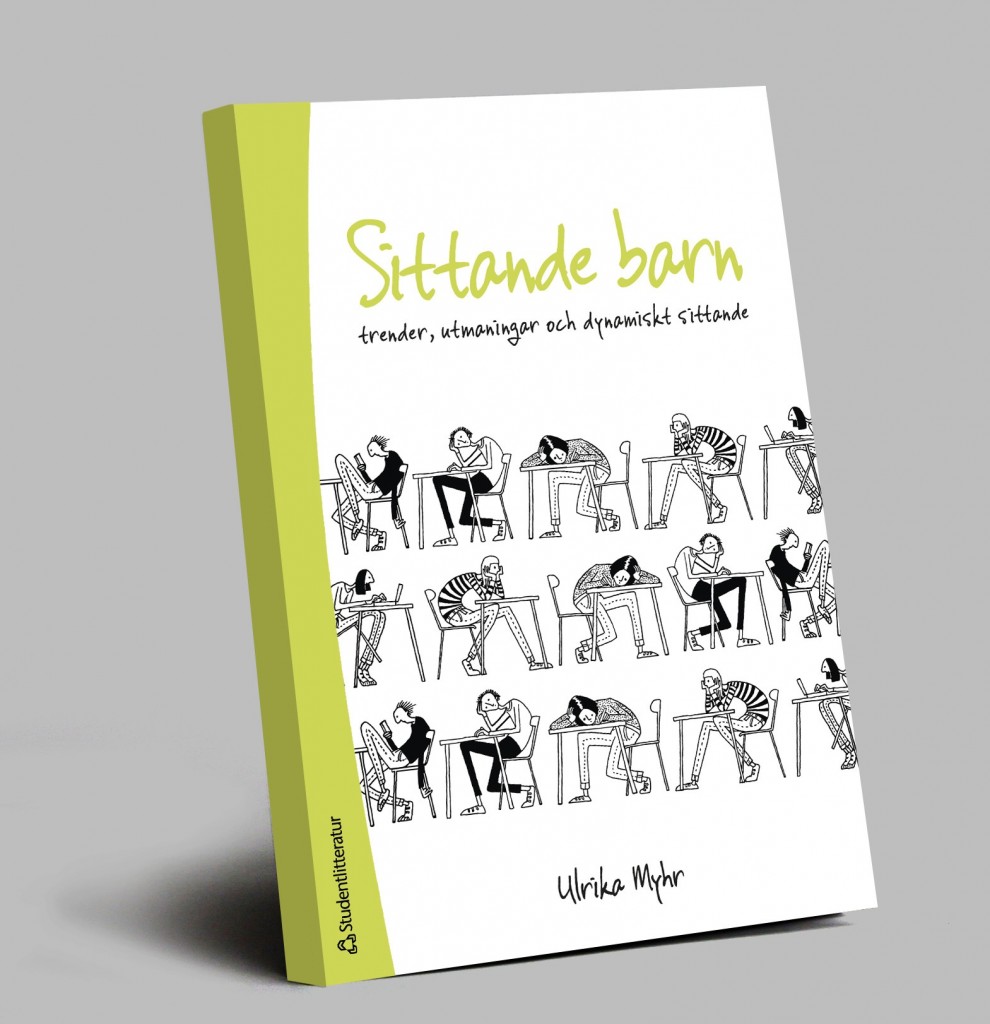School furniture should facilitate good posture and transition between active working positions and resting positions. The furniture should be adapted to the children’s height and seating angle, seat height, table height, and the placement of footrests should provide conditions for good sitting ergonomics. Good sitting ergonomics in a working position means that the pelvis is in a neutral or slightly forward-tipped position, the back is straight, and the neck is aligned with the back. The feet should be able to move back under the chair. The thighs point “downwards” like a slight downhill slope. The most fundamental aspect to consider is the chair height; if it is too low, one sits with a rounded back, leading to weakness, short muscles, strained neck position, and impaired balance. In many classrooms, the furniture is the same height despite children potentially having a height difference of up to 40 centimeters Table height and table angle also affect sitting posture, but the foundation is the correct chair height.
There is a lack of knowledge and recommendations from the Swedish National Agency for Education regarding what to consider for school furniture to have a positive impact on children’s sitting ergonomics. There is also a lack of knowledge from those who determine standards for school furniture and from furniture companies. Many companies manufacture chairs with completely different designs without explaining why and how they are intended to meet the need. It is common for furniture suitable for elementary school to be recommended when children are in middle school. Some want to use chairs as exercise equipment and create an unstable sitting surface.


The illustration above is taken from a study conducted in Denmark. School children were asked to sit according to European standards and then choose how they feel most comfortable sitting. The boy on the far left is sitting according to the recommendations from the European Standard. In the image on the right, you can see how the children prefer to sit if they are allowed to choose for themselves – a good working posture.
Today, children spend a lot of time sitting. Therefore, it is more important than ever to create an environment where they can sit well. Dynamic sitting with alternation between activity and rest is natural and follows principles of sitting ergonomics, postural control, and motor development.
The book “Sittande barn” provides a basic overview of details in sitting ergonomics. It explains how postural muscles work, how the eyes and head position regulate activity in the whole body. The book includes tables with recommendations regarding chair and table height at different ages in school. There are tables to use for individual children (DYNSA manual) and for the entire class, where you can easily evaluate school furniture and plan for actions.
You can purchase the book in LTM’s webshop.
Här finner du även en manual för att bedöma och förbättra sittandet för en enskild elev: Bedömning av sittställning.Here you will also find a manual for assessing and improving sitting posture for an individual student: “Assessment of Sitting Position.”